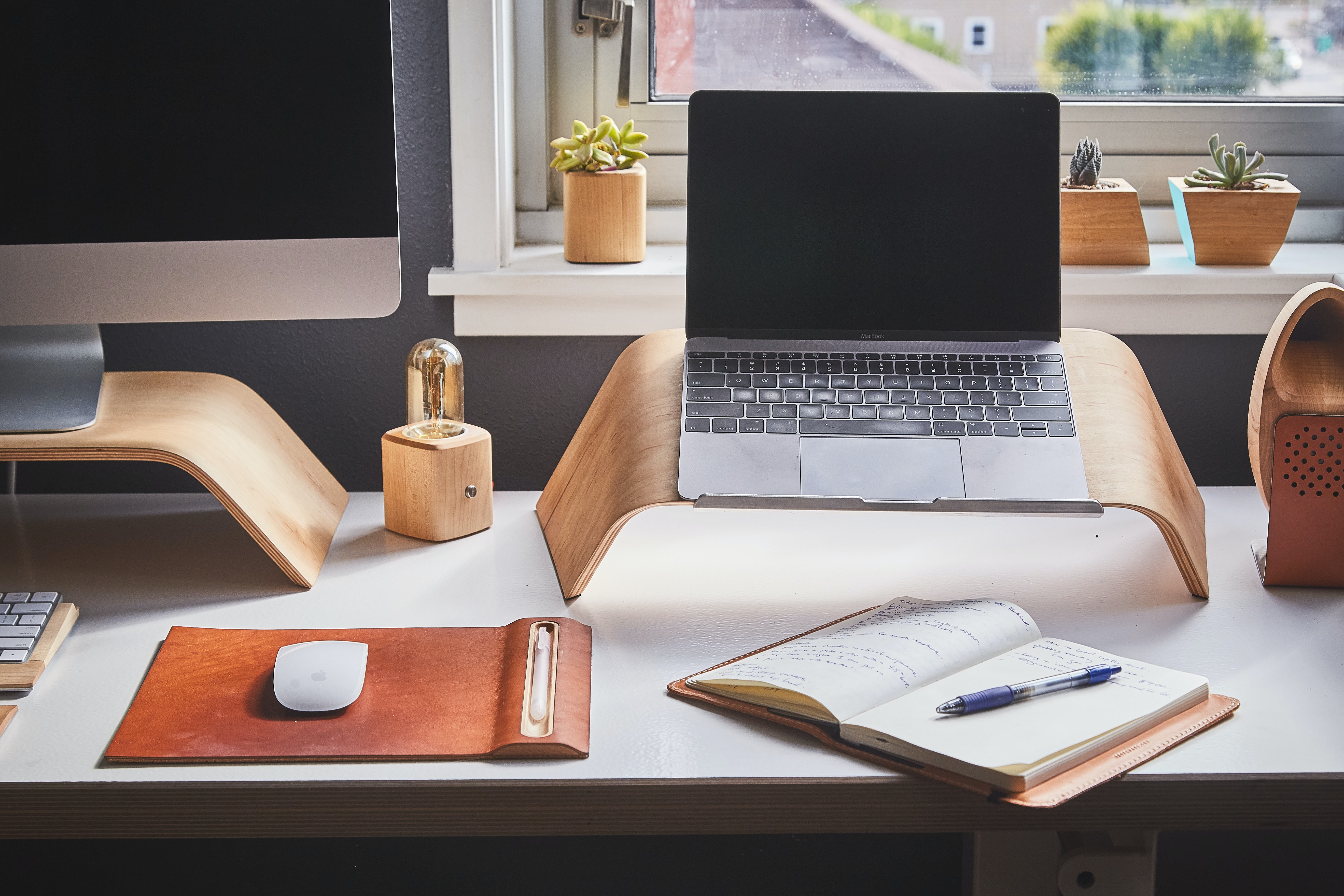 There weren’t many nice things to emerge from the coronavirus pandemic, but one thing we can appreciate is the increase in remote work. More and more employers realize that you don’t need to rent commercial business space to have a productive workforce!
There weren’t many nice things to emerge from the coronavirus pandemic, but one thing we can appreciate is the increase in remote work. More and more employers realize that you don’t need to rent commercial business space to have a productive workforce!
On the employee’s side, of course, is the question of how to create a comfortable workspace where they can focus on work. Here are our best tips for setting up home offices to maximize productivity.
Carve Out Your Space
Whether you work from home occasionally, on a hybrid schedule, or every day, it’s a good idea to keep the workspace separate from your living space as much as possible. That means finding a place in your home that’s just for work.
If you’re short on space, consider a desk that folds down from your wall or folds up and can be stored in a closet or under a bed.
Get A Desk
Many people might balk at the idea that they need a desk for work—won’t the kitchen table be good enough?
Truthfully, it probably won’t, especially not if your goal is productivity. There’s only so productive you can be when your body is not comfortable, and kitchen tables are designed to eat meals for a couple of hours every day, not for hunching over a laptop for eight-plus hours.
It doesn’t have to be an enormous desk with an imposing chair behind it, or a standing desk (although those are great!), but if you want to be your most productive work-from-home self, then at least consider some kind of lap desk if nothing else, so your back gets a break here and there.
Where’s Your Seat?
A desk is part of the formula, and the chair or seat you use is another. Even if you’re at a standing desk and you routinely stand all day long, try to find a chair that will work at your desk—you never know when an injury or weariness will make it more attractive than staying on your feet.
Power Plays
One nice thing about having an established workplace and a desk is that you can plug everything in and leave it there. No jockeying for outlets needed!
You might decide you want a few more electronics in the area, so using a surge protector is a fantastic idea. It’s also easy to power down your workstation with a surge protector; just flip the switch.
How’s The Light?
A more brightly lit office can help you feel more energized and ready to tackle the tasks at hand, so if the part of your house where you’ve created your office space is on the dimmer side, think about adding some lamps, opening as many windows as you can to the light, and brightening up any bulbs in sockets.
Some people work remotely like ring lights to help illuminate their faces for video calls, and if that’s you, then you’ll want to think about setting it up somewhere that makes you look amazing.
Elevate The Laptop
A laptop stand can make a big difference, especially on a smaller desk. By elevating your laptop, you give yourself more surface space on the desk for pens or planners, and it is usually also more comfortable for your head and neck to look at a screen at eye level than to duck down to see it.
Moving Around Your Machine
Find a keyboard that fits your desk (they come in a lot of sizes, and you might be surprised by how fancy some of the colors can get!) and figure out how to situate it so that you can use it comfortably for hours every day.
A mouse or trackpad is also essential for a well-equipped home office—go with a trackpad if you’re concerned about the desk space that a mouse will occupy.
Screen Time
If you’ve ever used two screens in your office, you know it can increase productivity and efficiency. Your company might provide you with a screen, but if not, consider ordering one for use; it doesn’t have to be extremely expensive or high-res to help turbocharge your work.
Make Note-Taking Easy
Clipboard-style or keyboard-length notepad whiteboards or erasable and reusable notebooks are a couple of options for taking actual written notes. This might or might not be something you enjoy doing at your job, and many people eschew the pen entirely.
However, if you’re in a rush to capture an idea or a name and you don’t already have your notetaking app open, access to a pen and a surface feels like the best kind of foresight.
Personalize It!
Work is occasionally stressful even if you have the best job in the world, and one of the best ways to alleviate stress is to look at a picture or image of someone we love, nature, a cute animal, and so on.
There’s no shame in framing an adorable family photo or that pic of you with your best friend on vacation where you’re both laughing so hard you’re crying. Keep it somewhere you can see it frequently and let those warm feelings run rampant as often as possible.
Leveling Up
Now that the basics that will keep you comfortable at work are in place, it’s time to think about what you might want to add or include that will make you feel more mentally alert and focused while you’re at work.
Take a look at the walls and ask yourself how you feel about the paint color. You’ll be spending a lot of time in this area, and if the colors are jarring or irritating, you probably won’t enjoy that time very much! Consider painting one or all of the walls in the room in a color that makes you feel alert and focused.
If the workspace feels small or cramped, or you’re seeking some additional light sources, consider using the standard design trick of hanging mirrors on one or more walls to help bounce light around the room and make it feel more spacious.
There’s a reason why so many offices have plants in them: The presence of a green, growing thing is relaxing and rejuvenating for many people. Finding a plant or two that can live happily in your office space is more rewarding than most would think!
Tips For Making Remote Work Easier
Once your home office is designed for productivity, a few tweaks can make your working-from-home experience even better.
Create A Designated ‘Extra’ Space
When someone from your office stops by because they’re in the area, or another remote-working friend wants to hang out quietly while you work together, or your kids want to study while you’re plugging away, it’s really nice to have a spot where they can be comfortable and productive, too.
Not every office is big enough to accommodate this, but consider finding two work-from-home stations in your square footage if possible. You might not need the second at all (and a folding desk still works!), but if you ever want it, you’ll be so glad you planned ahead.
Set Your Working Hours
Digital calendars allow you to set your working hours so that meeting requests only come in during certain times of day. Take advantage of technology that’s intended to protect your time and set your working hours for whenever is appropriate for your job.
Get An ‘In Meetings’ Sign
A flippable sign on your door is an instant signal that you’re in a meeting! The trick is to remember flipping it before the meeting starts, which you can manage by setting up an extra notification or ping for two or three minutes prior to the meeting beginning.
Post Your Schedule
When you’re sharing a house with other people and have work meetings to attend, adding your roommates or spouse (or kids) to a Google Calendar typically is not the best solution.
Instead, hang a whiteboard or another erasable surface outside your office, or use a sticky note, and make a point to write down your meeting schedule for the day, either before you leave the day before or first thing in the morning.
This way, everyone who needs to know can see when you’ll be busy or unavailable without disturbing you if you’re already in a meeting. (And if you’ve forgotten to flip your “in meetings” sign, they might even do that for you!)
Keep It Clean
Spend some time every week or so to straighten up your desk, dust, sweep, and so on. Maintaining an organized and clean workspace will help you focus on work, not on whatever is cluttering up your desk.



